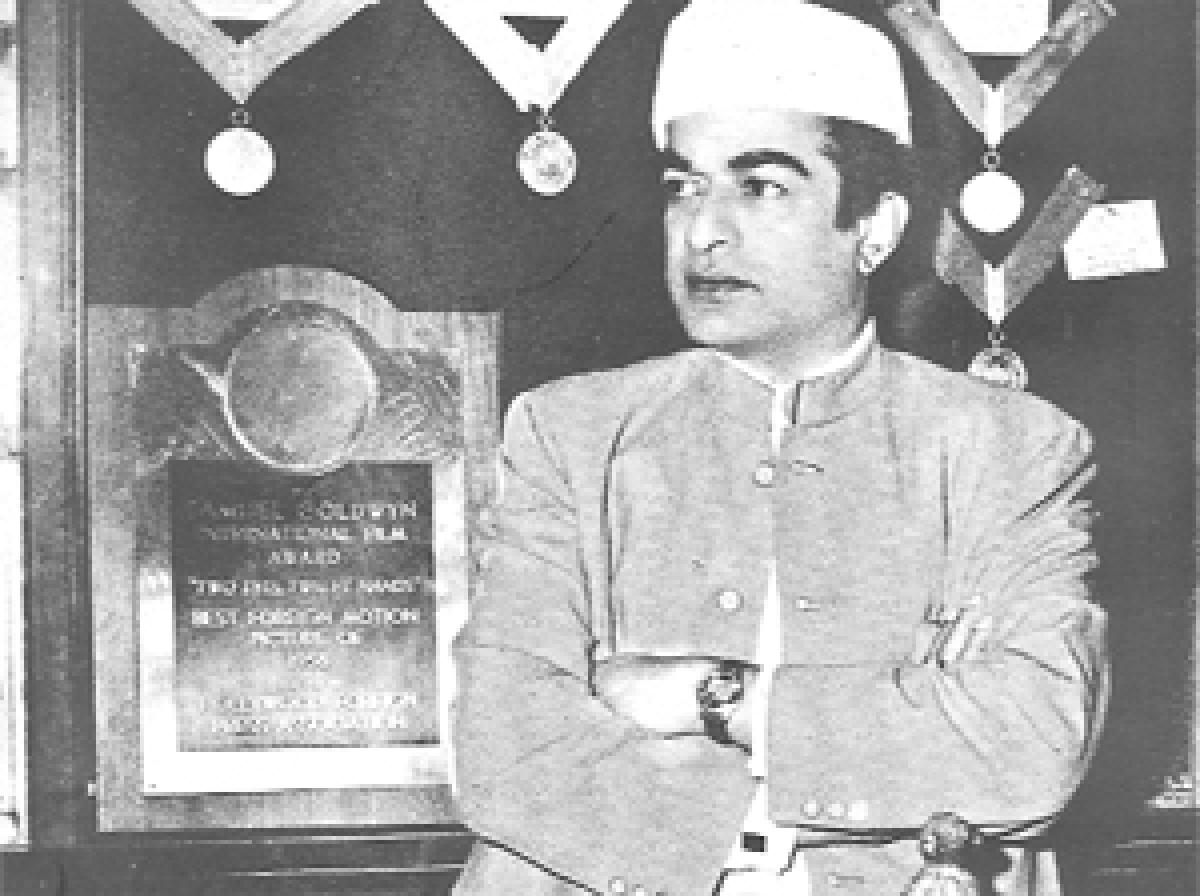Live
- Eatala dares Revanth for debate on Cong 6Gs
- Modi strengthens global ties at Rio de Janeiro
- 55% share price fall costs Ola Electric investors Rs. 38K cr
- Banks report synchronised growth in credit, deposits
- PM Awas 2.0 launched
- Target Kohli’s body, his front pads to put him on back-foot: Healy’s advice to Oz quicks
- LIC accused of thrusting Hindi
- Will make Warangal a la Hyderabad
- Will showcase Indiramma Rajyam: CM
- HC orders attachment of Himachal Bhawan
Just In

Shaping The Course Of Indian Cinema. And when one courageous film ran afoul of vested interests, there were powerful backers to ensure it faced no problems - no less than Sardar Vallabhbhai Patel and Morarji Desai, the then home ministers of India and Bombay state.
.jpg) And when one courageous film ran afoul of vested interests, there were powerful backers to ensure it faced no problems - no less than Sardar Vallabhbhai Patel and Morarji Desai, the then home ministers of India and Bombay state.
And when one courageous film ran afoul of vested interests, there were powerful backers to ensure it faced no problems - no less than Sardar Vallabhbhai Patel and Morarji Desai, the then home ministers of India and Bombay state.
But he did deserve their help for his timely "Apna Desh (Hindi)/Nam Nadu (Tamil)" (1949), an eloquent appeal against the deepening fault-lines threatening to destabilise the newly-independent country, but facing an ignorant, ill-informed and easily-swayed public and a malicious media campaign, as noted in his long-due biography.
Far ahead of his times but constantly re-inventing himself, Shantaram (1901-90) was a pioneer of not only Bollywood but the Indian film industry itself, seeing its journey from silent to "talkies", from black and white to colour, from depicting mythology and historical episodes to reflecting the immense diversity of contemporary life and society and the infinite spectrum of the human imagination.
No less than a film was his own professional life including a spell of self-chosen separation from family, unappreciative mentors, double-dealing partners, love and its souring, jealous rivals trying to bring him down (including the first possible phenomenon of 'paid news') and more but his entire story has never been told so far.
Shantaram did pen his autobiography "Shantarama" (in Marathi but later translated into Hindi) but the grand old man of Indian cinema has not received the attention his expansive contributions necessitate - at least in print. There is "V Shantaram: The Legacy of the Royal Lotus" (2003) by his son Kiran Shantaram, along with Sanjit Narwekar, but the slim volume is more of an introductory overview as was Shampa Banerjee's "Profiles - Five film-makers from India: V Shantaram, Raj Kapoor, Mrinal Sen, Guru Dutt, Ritwik Ghatak" (1985) produced for the film festivals directorate.
It is finally his daughter Madhura, who earlier directed a documentary on her father's career ("Portrait of A Pioneer", 1992) who has ultimately filled a long-persisting void into a filmmaker who not only entertained, or educated but actually entranced.
Beginning with an enticing but unfulfilled wish of her father, Madhura, the wife of distinguished Indian classical vocalist Pandit Jasraj, recounts his early days and influences, and film career's start in 1920 by doing odd jobs on sets of the Maharashtra Film Company including being drafted at the last minute to portray Lord Vishnu in "Surekha Haran" (1921).
It chronicles his stint in Prabhat Studios, setting up of his own Rajkamal Kalamandir and making its first film ("Shakuntala", 1943, whose Lucknow scriptwriter led to Raja Dushyant, the heroine, Narada and Rishi Vishwamitra declaiming in chaste Urdu!) as well as "Maya Machindra" (1932), "Duniya Na Mane" (1937), "Aadmi (Hindi)/ Manoos(Marathi)" (1939) about a doomed love affair between a police constable and a prostitute, "Dr Kotnis Ki Amar Kahani" (1946), "Dahej" (1950) (which Prithviraj Kapoor was prevailed to do for only Rs.10,000 against his usual Rs.75,000 fee and established Lalita Pawar as the wicked mother-in-law), "Teen Batti Char Raasta" (1953) (which mirrored the situation in Shantaram's own multi-cultural family), the immaculately-crafted and colourful but dream-like "Jhanak Jhanak Payal Baaje" (1955), the path-breaking "Do Aankhen Barah Haath" (1957) and "Navrang" (1959).
Ultimately it is not only Shantaram's biography but also an invaluable account of life and culture during the early 20th century in patchwork of British territories and princely states (of what is now the modern Maharashtra), and later, of public attitudes to the fledgling film industry, contemporary challenges of film-making, of the stringent (British) censor board and fickle public sentiment, and a new set of challenges in an independent India. It is equally readable for both aspects!
Vikas Datta

© 2024 Hyderabad Media House Limited/The Hans India. All rights reserved. Powered by hocalwire.com







